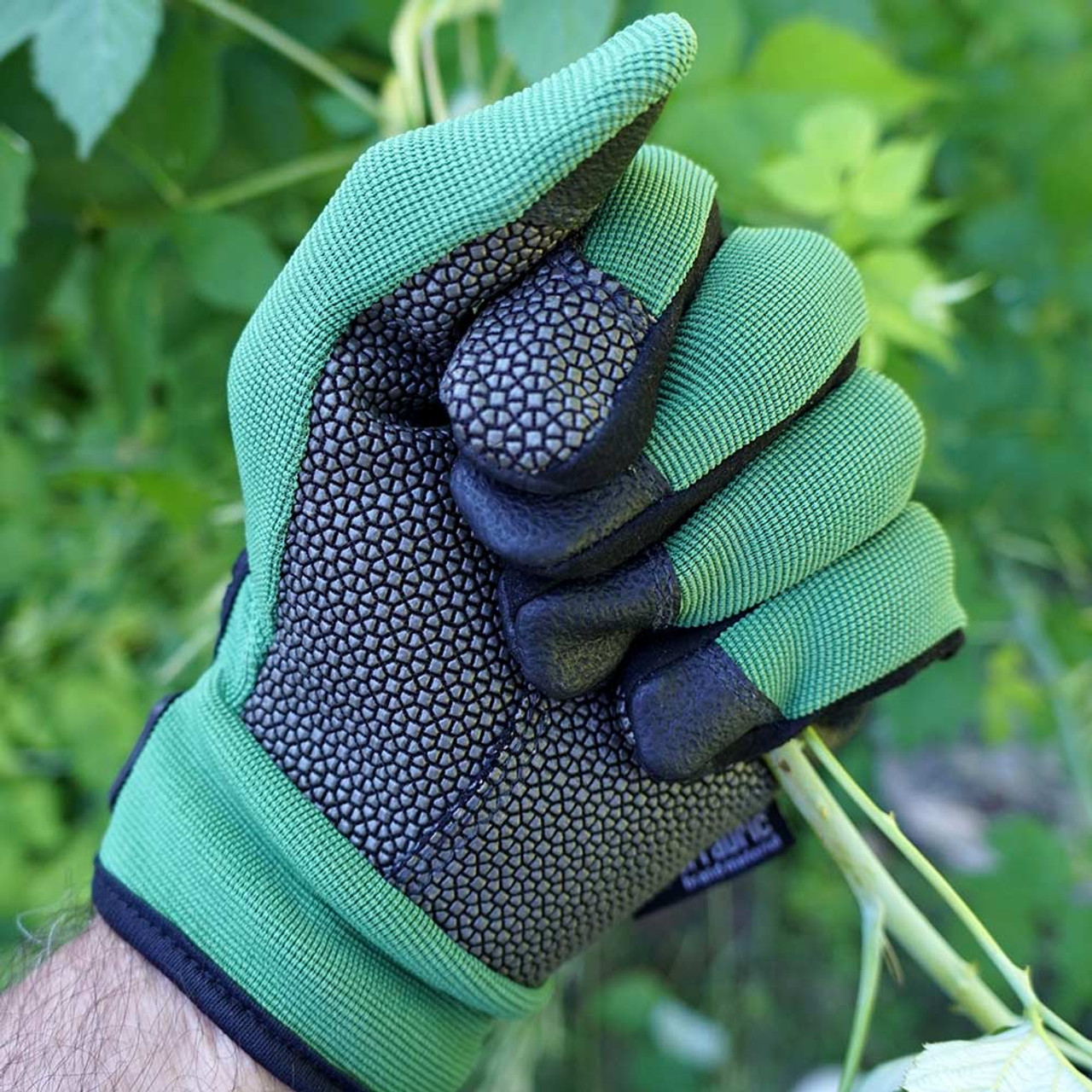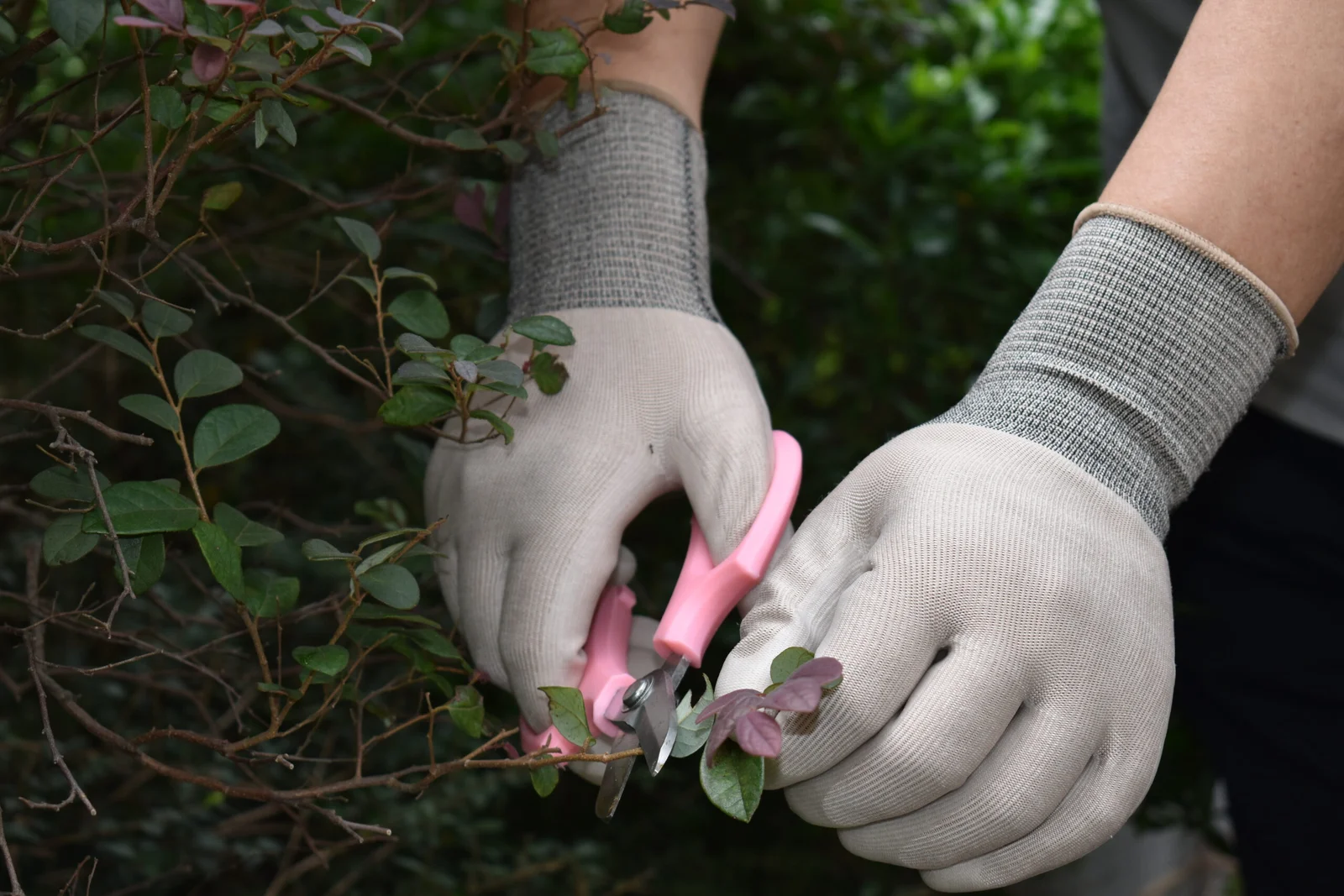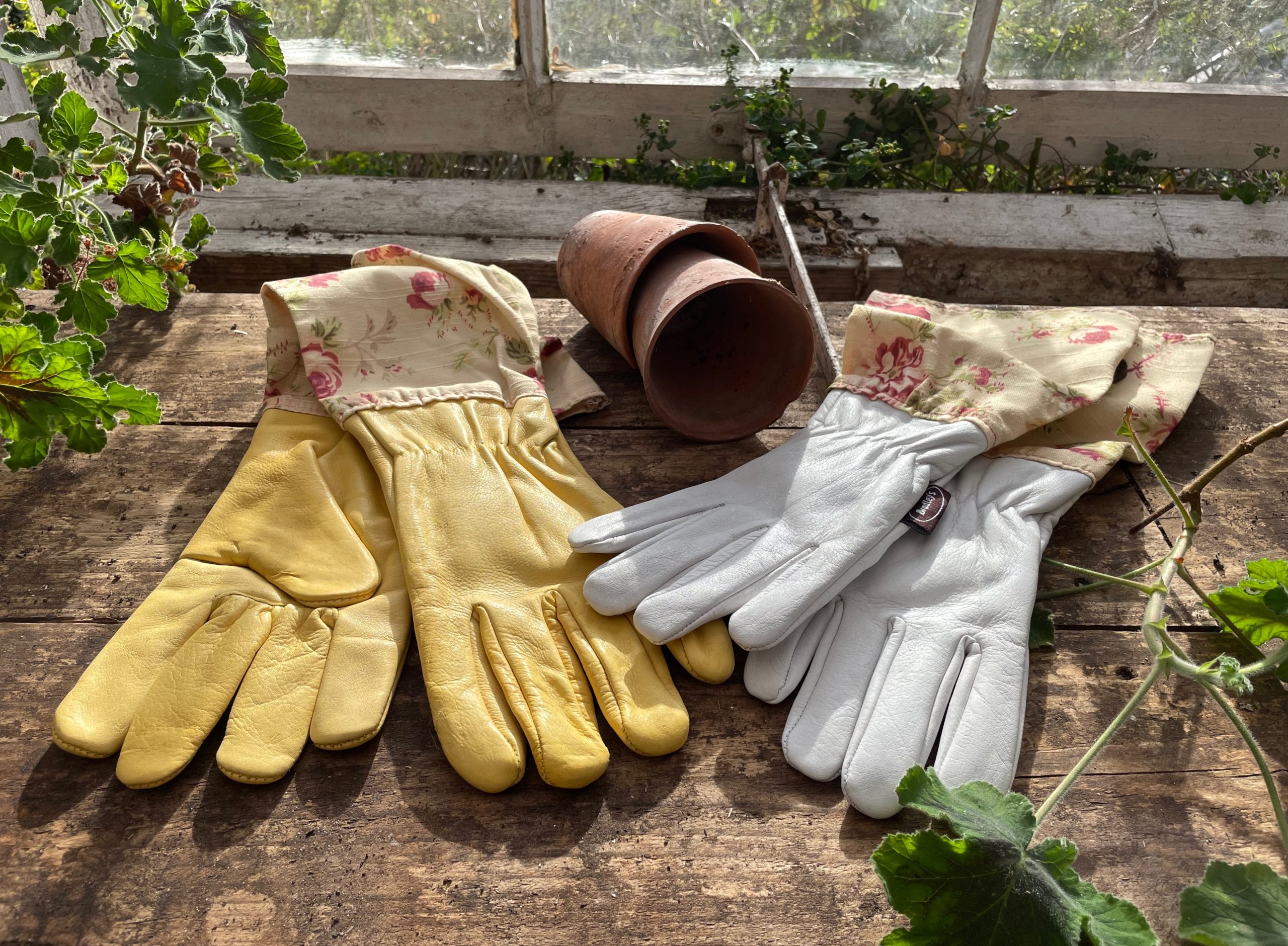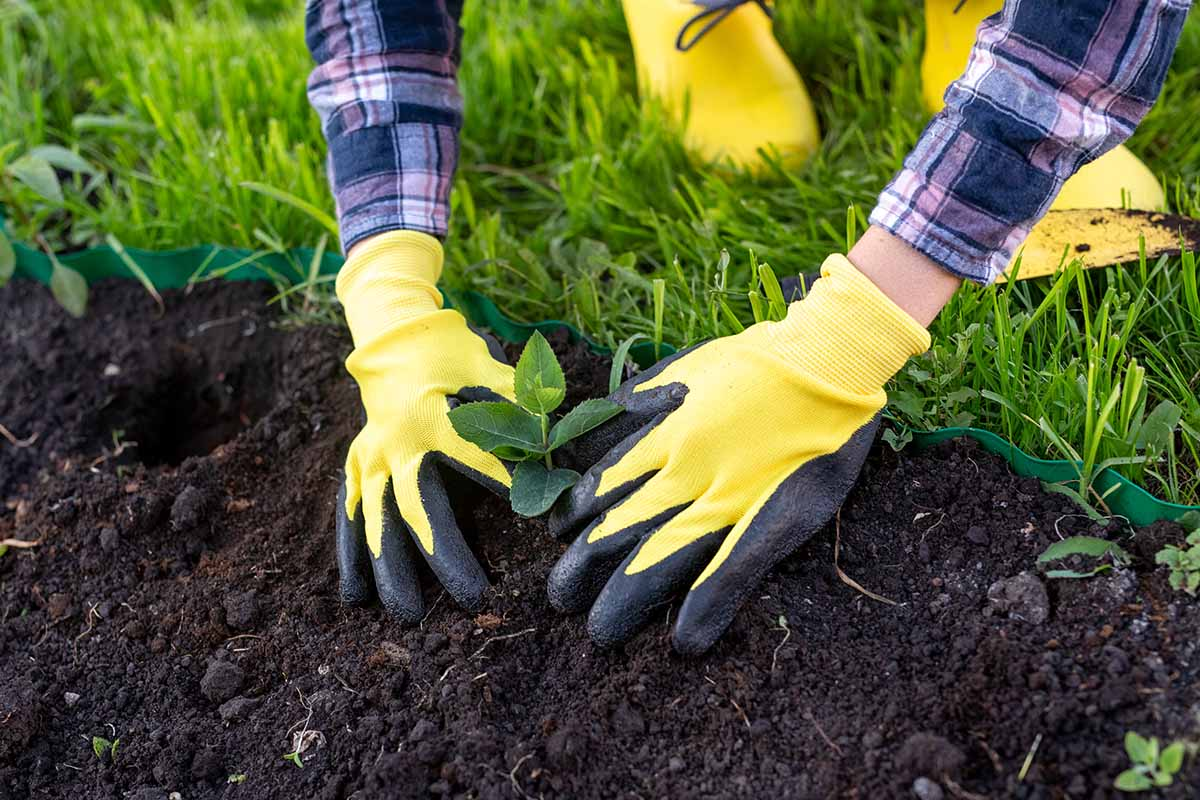Gloves Suitable for Gardening Work, commonly referred to as gardening gloves, are a type of personal protective equipment specially designed to facilitate smooth gardening operations. They are mainly used to protect the hands from dirt, plant thorns, tool abrasion, and insect bites. These gloves are often waterproof, puncture/cut-resistant, non-slip, and grip-enhancing, thereby improving your work efficiency in gardening environments. Below, we will introduce you to some of the best gloves for gardening applications.

Latex Coated Gloves
Latex coated gloves are made by knitting lightweight fabrics such as cotton, polyester, or nylon, and then dipping the palm and fingers into a layer of latex, combining the two components.
Advantages
- Excellent grip, even in wet or muddy conditions, helping to hold tools, plants, or pots securely and prevent accidents due to slippage.
- Can block wet soil, moisture, and damp grass, keeping hands clean.
- When weeding, pruning, or turning soil, these gloves reduce minor scratches and abrasions caused by branches, rocks, or tools.
- Thinner and more form-fitting than other gloves, making them suitable for fine tasks such as seeding and transplanting.
- Most latex-coated gloves are cost-effective.
- Latex is more environmentally friendly compared to other materials, helping to protect the ecosystem.
Disadvantages
- When handling thorny plants such as roses, brambles, or cacti, the latex coating tends to be thinner and may be easily punctured, failing to offer adequate protection.
- Latex deteriorates faster under sunlight, moisture, or repeated friction; the surface may crack or harden, reducing the glove’s lifespan.
- While water and dirt-resistant, they are not resistant to strong acids, alkalis, or chemical pesticides. These gloves are not recommended for pesticide spraying or cleaning tasks.
- A small percentage of people are allergic to natural latex. Those with severe reactions should avoid these gloves and opt for nitrile-coated ones instead.
Uses
Suitable for weeding, planting flowers, carrying wet pots, and using gardening tools for digging.

Nitrile Coated Gloves
Nitrile coated gloves are made by knitting lightweight fabrics such as cotton, polyester, or nylon, and dipping the palm and fingers into nitrile synthetic rubber.
Advantages
- Nitrile material offers excellent oil and chemical resistance, effectively preventing irritation or damage from pesticides, insecticides, or liquid fertilizers.
- Tougher than latex, nitrile can withstand light punctures and abrasions during tasks like pruning thick branches, moving rocks, or gripping tools.
- Treated with special textures for enhanced grip, even in wet or muddy environments.
- As synthetic rubber, nitrile does not contain natural latex proteins, making it ideal for latex-allergic individuals.
Disadvantages
- Although tougher than latex, nitrile is relatively stiffer and less elastic, resulting in a less sensitive feel for precision tasks like seeding or transplanting.
- Nitrile-coated gloves tend to be more expensive and consume more material, though they offer higher value.
- As a synthetic material, nitrile is less biodegradable, making it less suitable for environmentally-conscious users.
- Some nitrile types may harden and lose flexibility in cold temperatures, making them unsuitable for outdoor gardening in winter.
Uses
Ideal for spraying pesticides/fertilizers, handling thorny plants, weeding, seeding, loosening soil, and carrying flowerpots or wet soil.

Cut-Resistant Gloves
Cut-resistant gloves are designed to protect hands from sharp tools, glass, or metal edges, and are made from high-performance materials like Kevlar, HPPE, stainless steel wire, or ultra-high molecular weight polyethylene.
Advantages
- Highly effective in preventing puncture injuries, especially when dealing with thorny plants such as roses, blackberries, cacti, and honeysuckle.
- Provides hand protection when using gardening shears, saws, knives, or trimmers.
- Protects against scratches and cuts when handling logs, branches, gravel, wires, or ceramic pots.
Disadvantages
- Usually made from thick, high-density fibers like HPPE, Kevlar, or steel blends, which reduces elasticity and makes them less suitable for fine, delicate tasks.
- High-strength materials may reduce breathability, causing hands to sweat during long-term use.
- Typically rigid and rough to the touch, reducing comfort for extended wear.
- Not waterproof, oil-resistant, or chemical-resistant; unsuitable for tasks involving fertilizers or pesticides.
Uses
Used in pruning with shears, handling thorny plants like blackberries, digging out roots, moving gravel, and handling ceramic pots.

PU Coated Gloves
PU (polyurethane) coated gloves are made by knitting lightweight fabrics like cotton, polyester, or nylon, then applying a polyurethane coating on the palm and fingers.
Advantages
- Soft and form-fitting, maintaining fingertip flexibility and sensitivity.
- Excellent anti-slip performance, preventing slips and accidental injuries.
- Effectively blocks dust and debris from entering finger gaps while maintaining good grip and dexterity.
- Back is usually made from breathable nylon or polyester, ideal for extended use in hot weather.
- Affordable, moderately durable, and reusable.
Disadvantages
- Not suitable for thorny plants or sharp tools; PU coating lacks puncture protection.
- Not chemically resistant; can be corroded or damaged by fertilizers or pesticides.
Lacks sufficient protection for handling heavy or rough materials, increasing risk of hand injuries.
Uses
Perfect for handling seeds, seedlings, and roots, operating small gardening tools, clearing fallen leaves, and maintaining flower beds.

Leather Gloves
Leather gloves are made from tanned animal hides such as deer, goat, or cow leather.
Advantages
- Suitable for chopping or pruning large plants, protecting hands from impact and scratches.
- Offers non-slip grip and tool handling security.
- Provides some protection from sunlight or brief contact with hot surfaces—suitable for working in high-temperature environments.
Disadvantages
- Thick leather has poor breathability, easily causing sweaty or damp hands and discomfort.
- Reduced finger flexibility makes them unsuitable for detailed work.
- Prone to absorbing water in wet conditions, leading to heaviness, deformation, or mildew.
- Not resistant to corrosive substances like fertilizers or pesticides, which can damage the glove and harm skin.
Relatively expensive, not ideal for frequent replacement or short-term light tasks.
Uses
Used for pruning roses and thorny plants, carrying heavy pots or wooden crates, and working with pruning shears or machetes.

Conclusion
As you can see, each type of gardening glove has its own unique features and advantages. Choosing the right one depends entirely on your needs. Trust us—there is a perfect glove out there for your specific requirements. If you would like help determining your ideal glove, please contact us now.
How to Measure Glove Sizes – Source: AIBON
Latex gloves– Source: AIBON
Safety gloves– Source: AIBON
Working gloves– Source: AIBON

